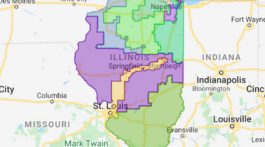A decade ago, the Indiana Chamber of Commerce commissioned a study on the state’s water supply to provide an account of the resource so vital for everyday life and economic development. Now, through the Indiana Chamber Foundation, the organization has released its follow-up research, “Water Policy and Planning: A 10-Year Update.”
This new report is intended to help set the stage for an integrated water management plan for the state, a key infrastructure and energy priority in the Indiana Chamber’s Indiana Prosperity 2035 visioning plan.
Like the first effort, this study was prepared by INTERA Incorporated, which has a location in Bloomington.
“Today, we have more observations of water levels and more information about flows (than in 2014),” says Jack Wittman, project leader and vice president and principal water resource hydrologist for INTERA. “We have a framework for planning that we’ve simply never had before.”
That’s exactly what the Indiana Chamber was seeking to accomplish, remarks its president and CEO Vanessa Green Sinders.
“Water is such a critical resource for all Hoosiers and it’s imperative to assess current levels as well as help legislators and planners put Indiana in a strong position for the future. We’re grateful for the contributions of all involved in this important study, which we hope can help inform next steps for local and state officials.”
General findings in the new report reveal water in the state is plentiful, but not evenly distributed. Distinctions abound based on geography. For instance, north of the Wabash River, every community, manufacturer and irrigator reportedly has access to their own local groundwater or stream.
In central Indiana, however, water must be well-managed to meet demand as it contains a diversity of sources that include reservoirs, rivers and well fields. And in southern Indiana, “regional water systems have long been the foundation of growth and economic development,” according to the report, relying since the 1960s on sources that include Patoka Lake, Monroe Lake and Brookville Reservoir.
One finding is that while total withdrawals for industrial use are declining overall, capacity may be added regionally as opportunities open for new development.
To avoid conflict, study authors assert, new facilities need to have access to adequate cooling and process water as well as guidance for planning new wastewater returns. In previous decades, industrial water use steadily declined and the use of surface water correspondingly dropped.
The summary continues: “New developments could reverse this trend, so the state needs to consider these plans carefully as the availability within any basin is determined. Where local supplies are unable to satisfy demands for process water, proposals for inter-basin transfers need to be developed with some basic guidance and direction from the state.”
The report also relays that groundwater withdrawal has increased more rapidly than surface water diversions since the 2014 study. The aquifers of the state are becoming increasingly important as a means of satisfying seasonal demands while controlling costs of treatment and conveyance.
Overall, Indiana has enough water for existing proposals and demand, thus putting the state in a much stronger position than, say, its arid western counterparts. Yet the focus turns toward the future.










